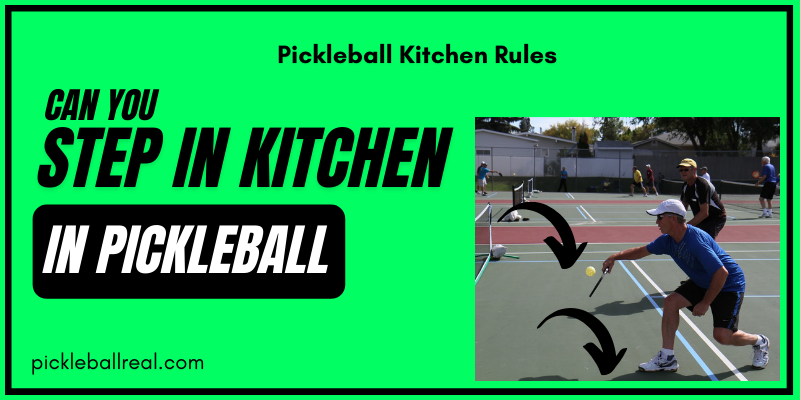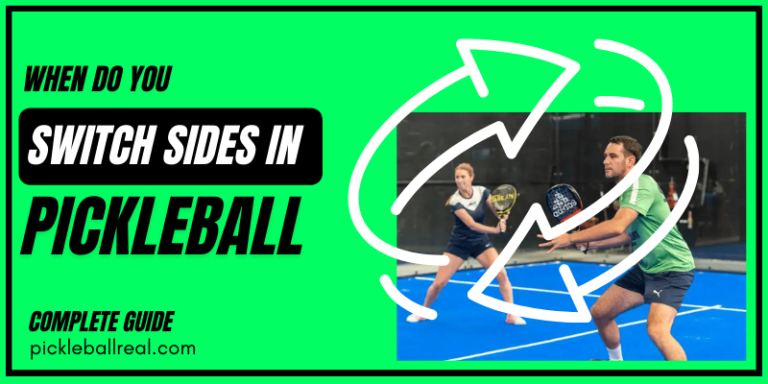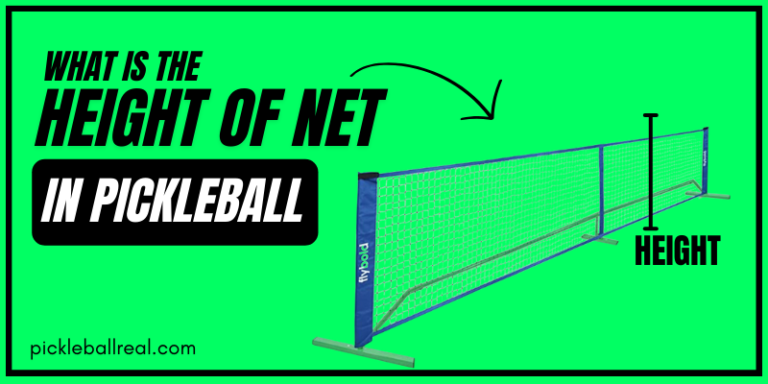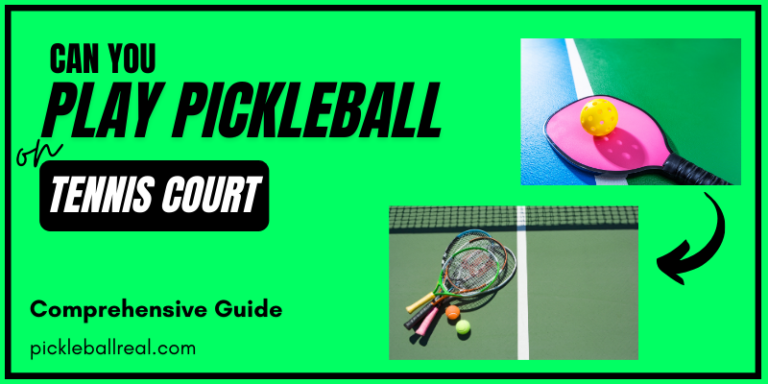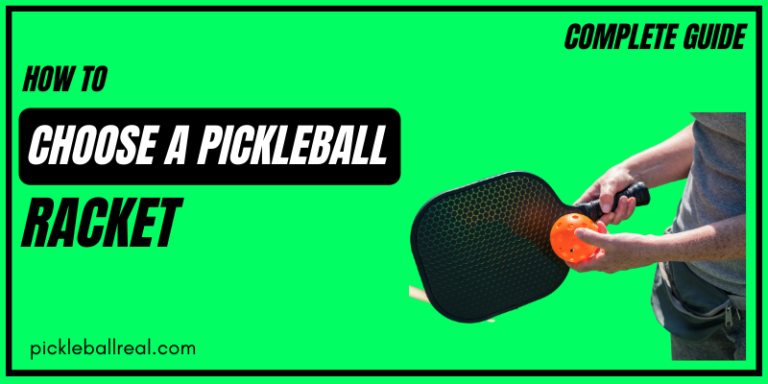Can You Step In The Kitchen In Pickleball – Rules
Pickleball, a rapidly growing sport amalgamating aspects of tennis, badminton, and ping pong, has captured the attention of enthusiasts across various age groups.
Amidst its dynamic gameplay, the “kitchen,” also known as the non-volley zone, stands as a critical area demanding strategic navigation.
Here, we will explore can you step in the kitchen in pickleball kitchen, shedding light on the crucial question: can players step into it? Join us as we uncover key strategies, pitfalls to avoid, and essential tips for mastering this integral facet of pickleball.
Understanding the Rules and Equipment of Pickleball
Pickleball, a unique and fast-growing sport, has been gaining popularity all over the world. Whether you’re a beginner or an experienced player, understanding the rules and equipment of pickleball is essential to enjoy this exciting game.
Rules of Pickleball
Let’s talk about the rules of pickleball. The game is played on a court similar to that of tennis but smaller in size. The objective is to hit a plastic ball over the net with a paddle without letting it bounce twice on your side. Serving starts from behind the baseline and must be done underhand.
Equipment for Pickleball
Now onto the equipment required for pickleball. You’ll need a paddle, which can be made of wood, composite materials or graphite. It should have perforations for aerodynamics and grip purposes. As for the ball, it’s lightweight and has holes like a wiffle ball to reduce speed.
The Role of Kitchen or Non-Volley Zone in Pickleball
One of the key aspects that sets pickleball apart from other racket sports is the inclusion of a dedicated area known as the kitchen, also referred to as the non-volley zone. This 7-foot-wide section stretches across both sides of the net and extends back for 7 feet.
The Purpose of the Kitchen
The purpose of this unique area is to prevent players from executing volleys close to the net, ensuring fair play and encouraging strategic shots. When you step into the kitchen, you are not allowed to volley or hit the ball out of mid-air. Instead, you must let it bounce before returning it.
Promoting Thoughtful Gameplay
By enforcing these rules, pickleball promotes a more thoughtful approach to gameplay. It requires players near the net to rely on their positioning skills and anticipation rather than relying solely on quick reflexes and fast-paced volleys.
Mastering the Kitchen: Challenges and Rewards
Mastering your game in this part of the court can be challenging but rewarding. It forces players to develop finesse and precision with their shots while strategically maneuvering their opponents into less advantageous positions.
Strategies for Success
To succeed at playing in the kitchen effectively, it’s important to practice your footwork and timing. Knowing when to move forward into position without stepping into this designated zone will give you an edge over your opponents. Furthermore, communication with your partner is crucial when playing doubles pickleball, as coordinating movements around this restricted area becomes even more critical.
Embracing the Kitchen for Elevated Gameplay
Understanding and respecting the role of the kitchen or non-volley zone is essential for success in pickleball. By embracing its challenges and incorporating strategies specific to this part of the court, players can elevate their game and enjoy all that pickleball has to offer!
Strategies for Playing in the Kitchen: When to Step In and When to Stay Out
Playing in the kitchen, also known as the non-volley zone, in pickleball requires strategic decision-making. Timing your movements is key to success.
One effective strategy is to step into the kitchen for aggressive volleys or put-away shots when the opportunity arises. Seizing high balls allows you to quickly end points and keep your opponents off balance.
Conversely, it’s crucial to stay out of the kitchen when your opponent is at the net or has hit a dink shot nearby. This grants you more time to react and prepare for their next move, avoiding any disadvantageous situations.
Recognizing your partner’s positioning is essential. If they are already at the kitchen, it’s prudent to stay back and provide defensive coverage, maintaining a balanced court position and minimizing vulnerability to quick shots.
Open communication with your partner is vital. Clear communication ensures coordinated shot selection and prevents confusion about court responsibilities.
Common Mistakes to Avoid in the Kitchen
One of the most crucial aspects of playing pickleball is understanding and navigating the kitchen, also known as the non-volley zone. While it may seem intimidating at first, mastering this area can greatly enhance your gameplay and give you a competitive edge.
Stepping in too early
Wait for the ball to bounce in the kitchen before hitting it to avoid faults.
Spending too much time in the kitchen
Move out swiftly after your shot to avoid vulnerability to opponent’s dinks and drop shots.
Neglecting proper footwork
Ensure both feet are positioned correctly outside or on the line of the kitchen while hitting shots near it.
Avoiding risky shots
Refrain from attempting difficult shots like smashes or powerful winners when there isn’t enough space, preventing errors and potential point losses.
Tips for Mastering the Kitchen Game in Pickleball
Stay balanced
When playing in the kitchen, it’s crucial to maintain proper balance and footwork. Keep your weight evenly distributed and be prepared to move quickly.
Practice patience
The kitchen game requires a level of finesse and control. Avoid the temptation to rush shots or go for winners from this close range. Instead, focus on placing your shots strategically.
Improve your dinking skills
Dinking is a key aspect of play in the non-volley zone. Work on developing soft touch shots that barely clear the net, making it difficult for opponents to attack.
Communicate with your partner
Effective communication is essential when playing as a team in pickleball. Let your partner know when you plan on stepping into the kitchen so they can adjust their positioning accordingly.
Anticipate opponent’s moves
Try to read your opponent’s body language and anticipate their next shot or movement pattern. This will give you an advantage when deciding whether to step into or stay out of the kitchen.
Master quick volleys
Quick reflexes are essential when volleying from close range in the kitchen area. Practice drills that focus on rapid-fire volleys to improve reaction time and accuracy.
Learn from experience
Don’t get discouraged if you make mistakes while mastering the kitchen game; learning from them is part of the process! Reflect on each match, identify areas for improvement, and continue practicing diligently.
Remember, mastering play in the kitchen takes time and practice but can significantly elevate your pickleball game overall! So embrace this unique challenge with enthusiasm and determination!
Conclusion
Understanding the rules and limitations of the kitchen in pickleball is key to mastering this unique aspect of the game. By strategizing your moves and being mindful of your positioning, you can effectively utilize the kitchen to your advantage, enhancing your overall performance on the court.
FAQs
Can you step in the kitchen before it bounces?
No.
Can you step when serving in pickleball?
Yes.
Can you step in the no volley zone in pickleball?
Yes, but only after the ball has bounced in that area.
Where can you not step in pickleball?
You cannot step into the kitchen (non-volley zone) unless the ball has already bounced there.
Can you bounce the ball when serving in pickleball?
No, the serve must be made without bouncing the ball.

